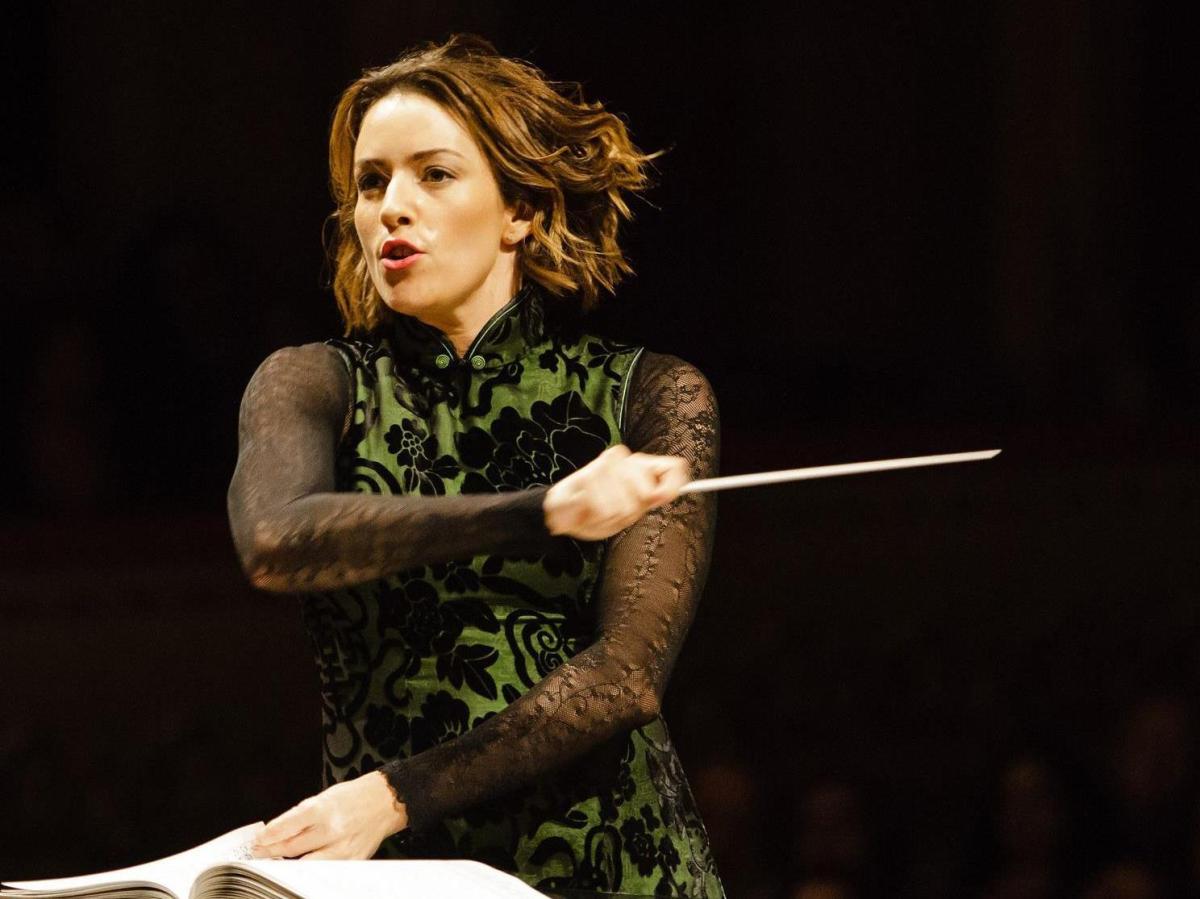Conductor Alondra de la Parra. Photograph by Cicero Rodrigues courtesy of Queensland Symphony Orchestra.
Despite the title, this Maestro concert only included one piece out of four by the Norweigan composer. But as it was his most revered work, the Piano Concerto in A minor, it seemed fitting to name the concert after him. This work is so enduringly loved by audiences across the world that it is often claimed to be the most popular concerto ever written, thus bringing an increased expectation on the pianist who dares to conquer this sacred work.
Making his debut with the QSO, young Dutch pianist, Hannes Minnaar, got off to an impressive start in the Allegro movement, the dramatic and well-known opening chords following the timpani roll leading swiftly to the major theme of the strings. This languorous melody, so reminiscent of Grieg’s Norwegian folk music, was sensitively taken up by the piano, with Minnaar’s interpretation introducing both passion and excitement as the theme built to a crescendo. The finale of the movement, a virtuosic cadenza, was fast and furious with his fingers flying across the keyboard to arrive back breathlessly at the original melody.
His delicate lightness of touch in the higher registers of the Adagio movement was superb, ably assisted by the plaintive horn. In the third Allegro Moderato movement, the introduction of a new and energetic theme, followed by a lyrical one, recapitulated by strings and pianist, was expertly managed by conductor and pianist alike. Minnaar’s transitions from shimmering melodies to galloping rhythms, with a final dark sonority that took on the strength of the orchestral brass and timpani, was impressive. He made this Concerto his own and the piano responded accordingly, almost singing in anticipation. There was a power and freshness under Minnaar, as if Grieg’s famous work was being played for the very first time.
The audience response was ecstatic and Minnaar gave an encore that was ravishingly melodic. It proved to be a later piece by Grieg himself, written as a homage to the Concerto, a fitting conclusion to the work.
Richard Strauss’ tone poem, Till Eulenspiegel Merry Pranks, chronicles the misadventures and pranks of a German folk hero, Till Eulenspiegel, who comes to a sticky end in the story. It is a light-hearted piece with some jaunty music though Strauss’ style was evident in the large orchestral forces. The strong musical narrative includes a theme for horns representing the hero, while the clarinet plays the alter-ego of the hero, the wicked trickster. Conductor, Alondra de la Parra, injected much enthusiasm and warmth into the various orchestral characters, including the violas representing the clergy, first violins the young girls with their love theme, and the bassoons the serious and ponderous academics. There was also an excellent jazz-styled trumpet and a delicious solo first violin. As the galloping theme turned to a funeral march at the end, when Till has been caught by the authorities and is hanged, the complexity of Strauss’ music was clearly conveyed through the various colours of the orchestral instrumentation accompanying his journey. Such clarity, with excellent playing across the whole of the orchestra, was a credit to the conductor.
Not included in the printed program, but opening the second half of the concert, was a new piece specially written by local composer, Gordon Hamilton. De la Parra introduced it as 482 variations on a very short piece and it was both whimsical and tongue-in-cheek, but delightful nevertheless. Commencing with the Beatles’ song ‘Yellow Submarine’ it descended into variations of the song, utilising tune, words and notes intermittently but also injecting some big, sweeping rhythms. De la Parra kept a clear beat and the orchestra played well.
The final work of the evening was the delightful Pines of Rome by Respighi, a symphonic poem that is one of his best loved works, telling wonderful stories in each of the four movements about pine trees at various locations around Rome. De la Parra was across this narrative and appeared to be in her element interpreting this rich and beautiful work, from the lightness of the children at play in the first movement to the mournful catacombs in the second. This was followed by the beautiful lyricism of the evening at the temple of Janus in the third movement, with its haunting oboe solo and delightful recorded nightingale. The final movement started gently but led into the massive orchestral forces of organ, flugelhorns and full percussion and brass representing the Appian Way leading to the capital in all its majesty. It was a terrific conclusion.
The QSO’s Music Director Designate, Mexican born Alondra de la Parra, has a conducting style that is both efficient and economical. Technically proficient, she has a clear and precise beat and radiates confidence on the podium. Having only conducted in Brisbane a few times to date, she is clearly winning over audiences, demonstrating commitment and a distinctive style. She is generous with her praise to colleagues and the orchestra and is a polished performer. It will be interesting to watch her influence on the orchestra over her coming years as the first Music Director of QSO for many years.
Star rating: 4 1/2 stars out of 5
QSO Plays Grieg
Queensland Symphony Orchestra, Maestro Series
Conductor Alondra de la Parra
Piano Hannes Minnaar
Concert Hall, QPAC
Saturday 5 November 2016





